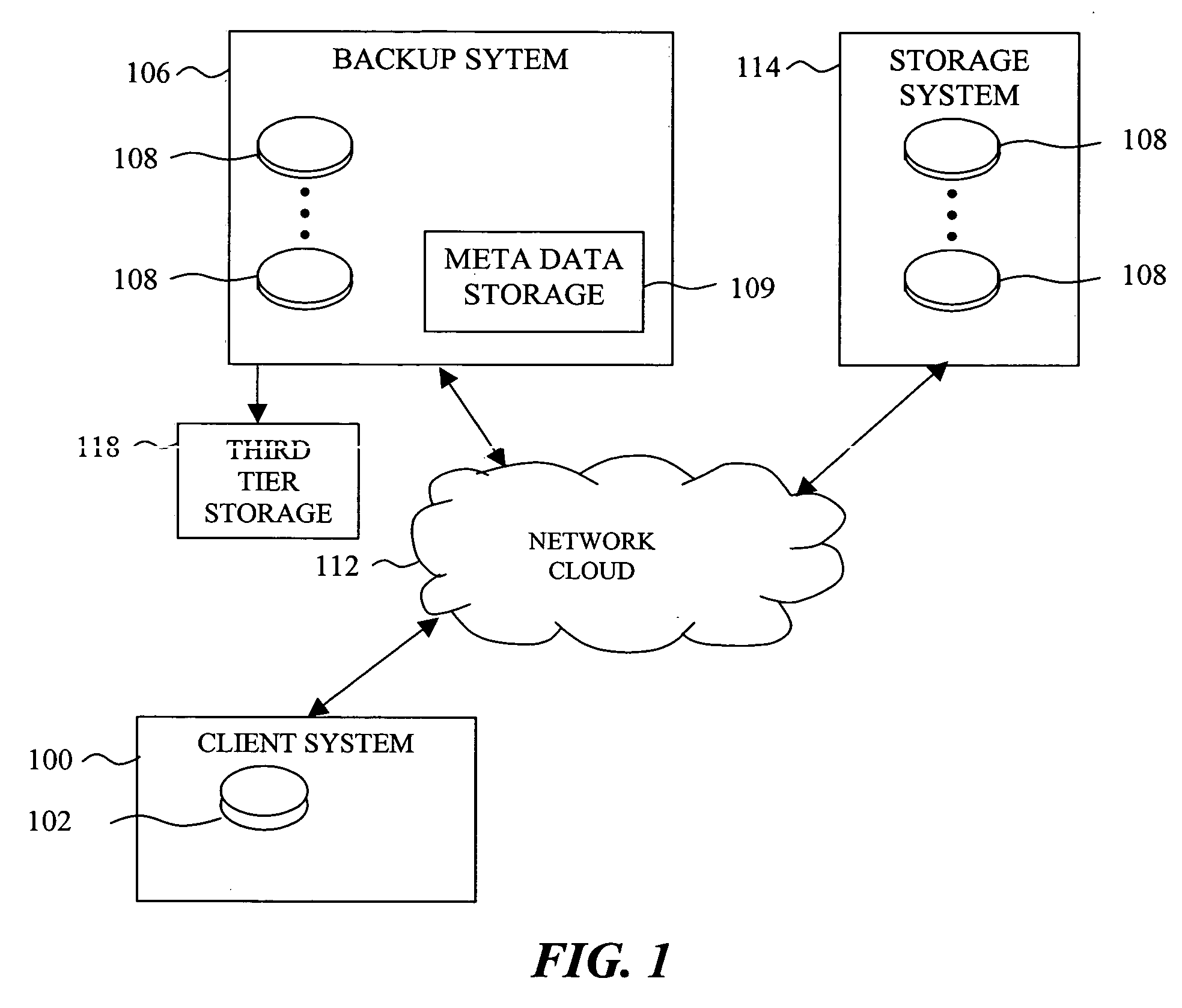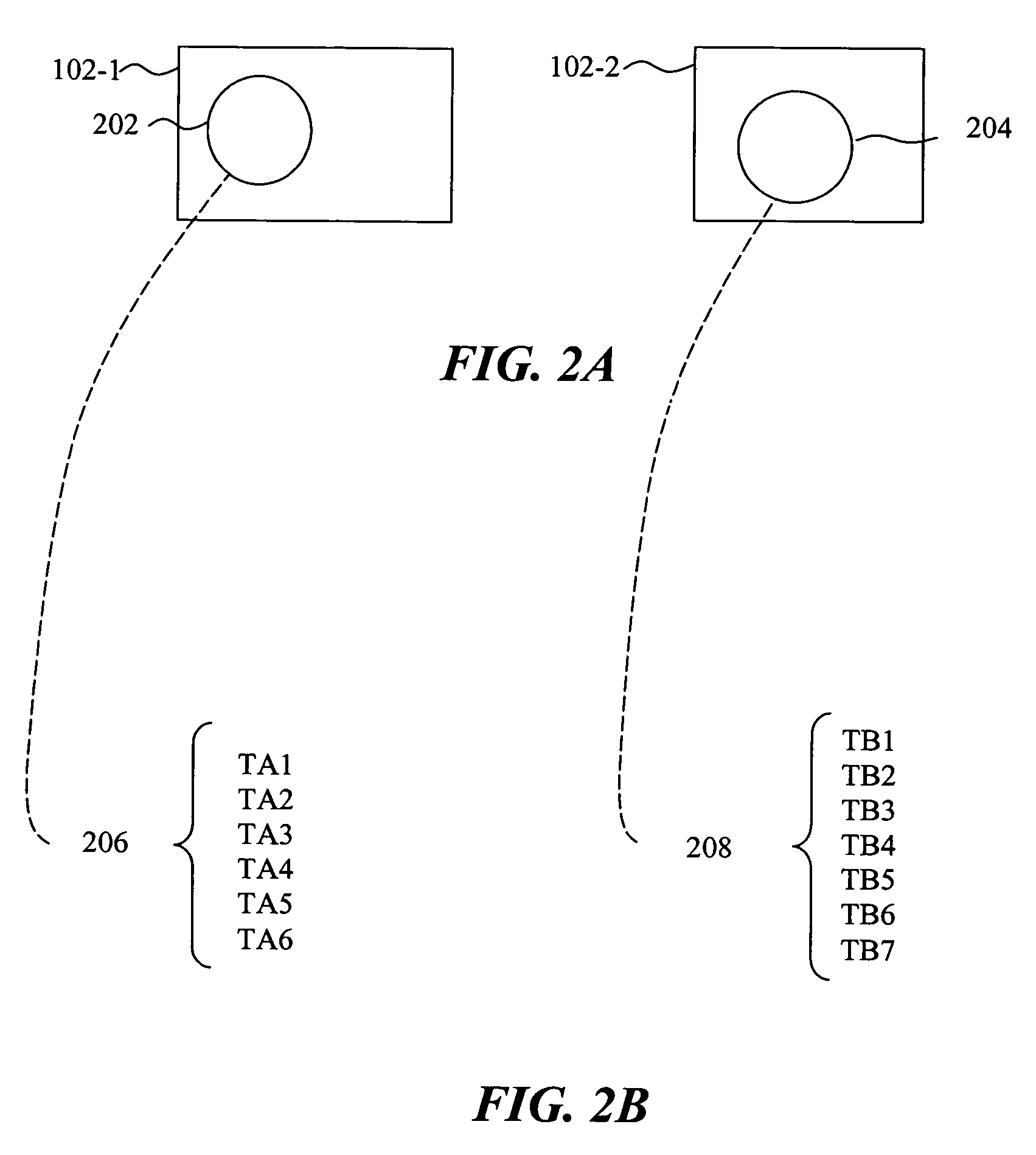System and methods for efficiently managing incremental data backup revisions
a backup revision and incremental technology, applied in the software field, can solve the problems of limiting the structure of the backup set cannot be recovered from the actual copied data sets, and the limitation of the backup frequency and the number of data sets, so as to reduce the overall storage requirement, reduce the load on the backup server, and increase the backup frequency and the number of supported backup sets.
- Summary
- Abstract
- Description
- Claims
- Application Information
AI Technical Summary
Benefits of technology
Problems solved by technology
Method used
Image
Examples
first embodiment
[0058] In step 512, set of ‘delete candidate data elements’ are managed such as to include any stored data element, which is needed by a certain data set in any backup revision and that data set has changed in the subsequent backup session. (A stored data element is said to be needed by a certain data set, if the stored data element was stored for a data set that has an identical signature. A data set that has changed its signature, is any data set that was present on the backup set during a backup session and in a subsequent backup session its content has changed, or that was completely removed from the backup set.) It is clear that a stored data element, which is needed by a data set that has not changed in any backup session, cannot become redundant when a backup revision expires, as it is surely needed by the other backup revisions that will be left in the backup group after the expiration of that backup revision.
[0059] As can be reasoned from FIG. 3A, the delete candidate data ...
second embodiment
[0079] Process 800 as illustrated in FIG. 8A details one embodiment of the indexation process of the data structures used in step 512. This process 800 is performed for each entry in the change backup set inventory of a new backup session. At step 802 the entry's attribute is checked, if it is a plus, then in step 804 the data set signature of this entry is searched in the stored data elements signature index. If the data set signature is not found in the stored data elements signature index, then at step 806 the stored data element signature is added to the stored data element signature index in a new node, the number of data sets on backup set is preset to one, and the current backup revision identification is recorded for the stored data element as will be exemplified below.
[0080] In this embodiment after performing step 806 the process continues in FIG. 8B where no action is taken before the process stops.
[0081] If during step 804 the data set signature is found in the stored d...
PUM
 Login to View More
Login to View More Abstract
Description
Claims
Application Information
 Login to View More
Login to View More - R&D
- Intellectual Property
- Life Sciences
- Materials
- Tech Scout
- Unparalleled Data Quality
- Higher Quality Content
- 60% Fewer Hallucinations
Browse by: Latest US Patents, China's latest patents, Technical Efficacy Thesaurus, Application Domain, Technology Topic, Popular Technical Reports.
© 2025 PatSnap. All rights reserved.Legal|Privacy policy|Modern Slavery Act Transparency Statement|Sitemap|About US| Contact US: help@patsnap.com



